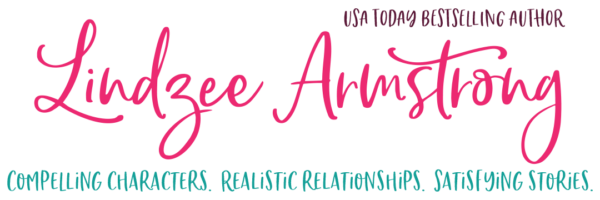Today I am lucky enough to have the fabulous September C. Fawkes do a guest post for me! She’s a fellow writer, and I’m so pleased to have her visit my blog today. I know you’re going to love September and want to check out more of her stuff. You can visit her at https://www.septembercfawkes.com/. Enjoy!
Five Ways to Start a Scene
by September C. Fawkes
Every time we write a scene, we have to consider how to open it. “Should I start in the middle of an argument or build up to it?” “Should I establish the setting before I delve into my character’s thoughts?” “How can I grab my reader’s attention?”—these might be some of the questions we ask ourselves. However you open your scenes, make sure you have variety.
I’m working on a first draft of a novel, and I’ve realized that I tend to want to open scenes with dialogue. Nothing is wrong with that in general, but if I did that for every scene, it would get redundant (and annoying), and most importantly, start to draw too much attention to itself.
To help me break this habit, I wrote down several different ways to start a scene. When I’m stumped on a scene’s first sentence or find myself relying too much on the same technique, I can look at my options. They are. . .
Dialogue:
“Who was that?” Jake Blount asked.
—The Heart is a Lonely Hunter, Carson McCullers
Dialogue is a great way to start a scene because it tells the reader the scene (most likely) has multiple characters in it, and they’re interacting. Additionally, many editors and readers state that character voice draws them into a story. If you open with dialogue, you can lead with voice. When readers skim books, they rarely skip dialogue; they’re drawn to it. Dialogue creates white space on a page, which is pleasing to the eye. And white space implies easy reading. The reader says, “I’ll just read a little more,” and then hopefully she can’t stop.
The above example also has a bit of a hook because it’s a question. We are waiting for the answer, and we’ll have to read to discover it.
Action:
Phulan and I step gingerly over the prickly gray camel thorn, each of us balancing a red clay pot half filled with water on our heads.
—Shabanu, Suzanne Fisher Staples
Action conveys movement and immediacy—two things every reader wants in a story. In this opening, something is happening. By starting with action, you let your reader know your scene isn’t a static one. In the above example, Staples establishes what her characters are doing, and she even includes a touch of tension: the narrator is balancing water on her head while navigating through thorns.
Description:
Samuel Spade’s jaw was long and bony, his chin a jutting v under the more flexible v of his mouth. . . .He looked rather pleasantly like a blond satan.
—The Maltese Falcon, Dashell Hammett
When you open with description, try to keep it from being mundane. Exercise some of your writing talents to create an image that stands out. A striking image can be used as a hook. Notice how Hammett finishes his description with “He looked rather pleasantly like a blond satan.” That’s striking, interesting. As a reader, I want to keep reading to discover what other ways Samuel Spade is like satan, and yet, pleasantly so. In your opening, you can describe a character like Hammett does, a setting, or an object.
Telling:
I am Dead, but it’s not so bad. I’ve learned to live with it. I’m sorry I can’t properly introduce myself, but I don’t have a name anymore.
—Warm Bodies, Isaac Marion
It’s true that as writers we want to “show” more than we “tell,” but telling isn’t that bad. Some of the greatest books open with the author telling us something. This example is the opening of Warm Bodies, a novel told from the perspective of a zombie. The author, Marion, just tells us something interesting. There’s no action. There’s no description. There’s no exchange of dialogue. But it’s still an effective opening, and I want to read more. To ramp up the opening of your scene, tell readers something interesting or witty or play with your words. Here is another telling example, the opening lines of Harry Potter: “Mr. and Mrs. Dursley were proud to say they were perfectly normal, thank you very much.” We don’t see anything, but it’s still interesting.
Thought:
The songs of the dead are the lamentations of the living.
So thought Eragon.
—Eldest, Christopher Paolini
Opening a scene with thought immediately puts the reader inside the character’s head. It’s intimate and personal, as we may be privy to information about him or her that others in the story aren’t. It also reveals character and can set the mood for the scene, since we will be experiencing it through this character’s perspective. In the example, we see that Eragon’s thoughts set a mood by alerting readers that this scene has death, and people mourning the dead, and it also reveals some of Eragon’s wisdom.
None of these techniques are inherently bad, but consider which would be best for the scene you are writing. Are your characters in a striking setting? Consider opening with description. Is your scene going to have a huge argument at the start? Consider opening with dialogue.
Make sure not to rely on the same technique too much, use variety.
Do you know of any other ways to open a scene? How do you decide how to start your scenes?



I didn't know you had a blog, Lindzee!<br /><br />I just start writing.<br /><br />Oh, and you may want to disable anonymous comments.
Oooo, yikes. Thanks for the heads-up, Lauren! I have gotten a lot of spam comments lately, but I didn't want to enable captcha. Totally forgot you can just not allow anonymous comments!